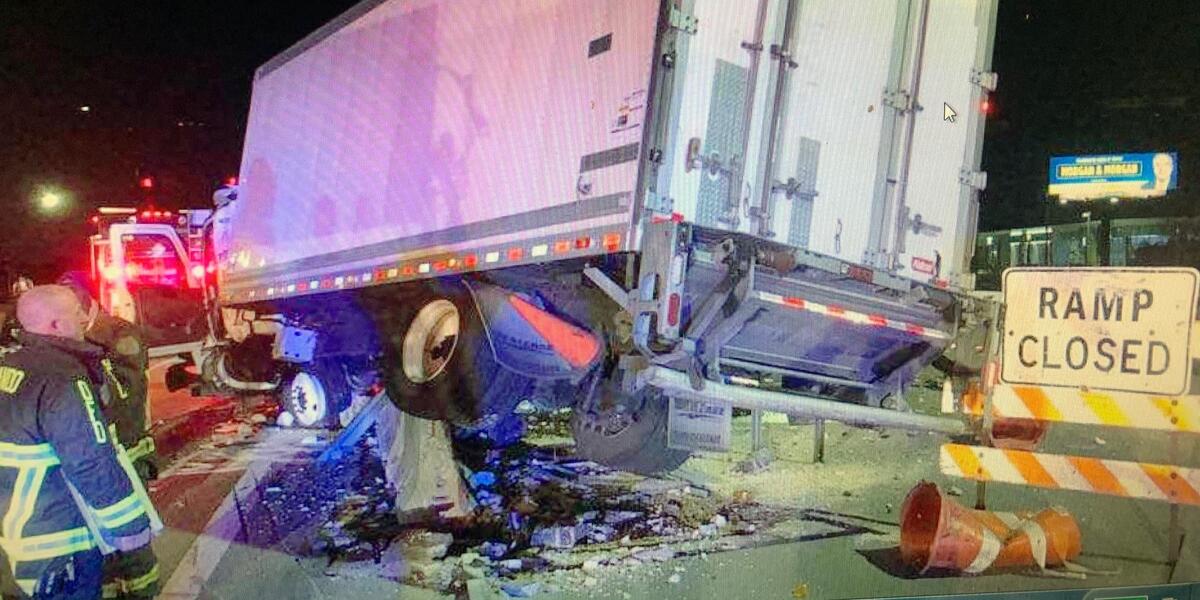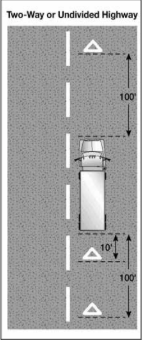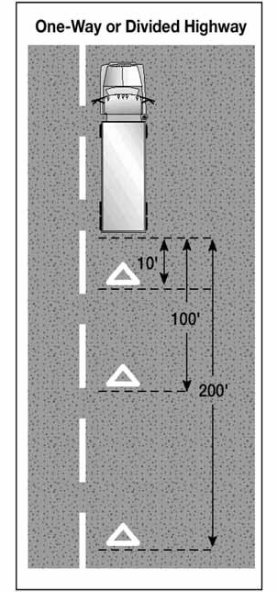Today, more than ever, companies that operate commercial motor vehicles need to prepare in advance for an accident that one of their vehicles may have. Depending on the severity of the accident, just the involvement is enough to throw the thought process of most drivers and supervisors into disarray. Companies need to have a clear and direct plan in place that will be implemented when an accident occurs. This plan needs to be flexible and able to be activated no matter what time of the day or night. When an accident occurs, the company has several immediate items that need to be addressed.
• The safety and protection of the driver and the public.
• Protecting the company’s liability and physical damage exposure.
• Providing information to law enforcement officials.
• Controlling progressive damage that may occur from the accident, including hazardous material spills, cargo, and the vehicles.
• Compliance with state and federal regulations (such as drug and alcohol testing, if required).
• Documenting and protecting the physical evidence at the scene (spoliation of evidence).
• Securing witnesses to the accident.
• Addressing the news media and social media.
• Having your vehicle towed to a safe and secure site.
Recommendations for a company to prepare for an accident:
• Put together an accident response team. Ideally, this team would consist of the safety director, the driver involved, the insurance accident investigator, the company’s attorney, and, if needed, an accident reconstruction expert.
• Have an accident action plan in place that outlines the direction and responsibilities of the response team.
• Develop written policy for drivers to follow when involved in an accident, regardless of severity. This would include reporting, conduct at the scene, responsibilities, drug and alcohol testing, etc.
• Include accident scene training as part of your new driver orientation program. Drivers should know exactly what to do and what NOT to do in the event of an accident.
• Place Accident Kits in the units. This kit should include a camera, accident report, pencil, and instructions. Place an expiration date on the outside of the kit that coincides with the expiration date of the camera. It is recommended that these kits be sealed or secured so the materials remain intact. Drivers need to be trained on how to use the camera and which pictures should be taken and which pictures should NOT be taken.
Photographing an Accident Scene
The old saying, “A picture is worth a thousand words,” is especially true when talking about taking photos at an accident scene. Over the past years, carriers have been placing disposable film cameras in their trucks to have drivers document evidence from an accident scene. Today, with the evolution of digital cameras, it is difficult to find a place to develop film. Regardless, if a driver has a film or digital camera, have you provided training to your drivers on how to use the cameras? If not, you run the risk that the driver will not have taken photos needed to document evidence, or worse yet, that the photos the driver has taken can be used against you in a court of law. Use the following tips to train your drivers:
-
Show the driver how to properly operate the camera (if a camera is provided) or make sure they have a digital camera with them. Have sample photos to show them how close or far to take the photos.
-
Shoot all available pictures on the roll at an accident scene (if film), or make sure they know to shoot plenty of pictures. That one extra picture may hold key evidence to protect your company.
-
Photograph all damaged areas and undamaged areas of all vehicles. Do not forget to photograph the license plate of all vehicles involved. This photo should be close enough to read the plate and identify which vehicle it was on. Try to include the unit number in the picture.
-
Photograph the interior of the vehicles, including the dash area and driving compartment. Include in the photo all safety equipment such as seat belts, steering wheel, pedals, and airbags.
-
Photograph the accident scene from all angles. When photographing a vehicle or entire scene, draw an imaginary box around the vehicle or scene. Then photograph from each corner of the box.
-
Take pictures of the roadway leading up to the accident scene. Any skid marks should be photographed from various angles. Include stationary objects, telephone poles, road signs, buildings, etc.
-
DO NOT take photos of anyone who has been injured or is deceased due to the accident. However, take photos of occupants in the other vehicles to document who was involved. For example, if the driver of the other vehicle is out changing a tire, photograph this to show the physical condition of the other driver immediately following the accident.
Question of the Week
I have struck a deer on the roadway and my vehicle is disabled. I have pulled the vehicle onto the shoulder. Where am I required to place my reflective triangles to alert other drivers of the situation I am in?
Answer: First, activate your 4-way hazard flashers immediately.
Where am I required to place my reflective triangles to alert other drivers of the situation I am in when broken down on the roadway?
From the Code of Federal Regulations 392.22:
“Whenever a commercial motor vehicle is stopped upon the traveled portion of a highway or the shoulder of a highway for any cause other than necessary traffic stops, the driver of the stopped commercial motor vehicle shall immediately activate the vehicular hazard warning signal flashers and continue the flashing until the driver places the warning devices (triangles).”
Answer: First, activate your 4-way hazard flashers immediately. Next, place the warning
reflective triangles as follows:
- One on the traffic side of and 4 paces (approximately 3 meters or 10 feet) from the stopped commercial motor vehicle in the direction of approaching traffic.
- One at 40 paces (approximately 30 meters or 100 feet) from the stopped commercial motor vehicle in the center of the traffic lane or shoulder occupied by the commercial motor vehicle and in the direction of approaching traffic.
- One at 40 paces (approximately 30 meters or 100 feet) from the stopped commercial motor vehicle in the center of the traffic lane or shoulder occupied by the commercial motor vehicle and in the direction away from approaching traffic.
Hills, curves, and obstructions:
If a commercial motor vehicle is stopped within 500 feet of a curve, crest of a hill, or other obstruction to view, the driver shall place the warning signal in the direction of the obstruction to view at 100 feet to 500 feet from the
stopped commercial motor vehicle so as to afford ample warning to other users of the highway.
Divided or one-way roads:
If a commercial motor vehicle is stopped upon the traveled portion or the shoulder of a divided or one-way highway, the driver shall place the warning devices as follows:
• One warning device at 200 feet, and
• One warning device at 100 feet in the direction of approaching traffic in the center of the lane or shoulder occupied by the commercial motor vehicle, and
• One warning device at the traffic side of the commercial motor vehicle within 10 feet of the rear of the vehicle.
Checklists Assist Motor Carriers in Post-Accident Activities
There are often a lot of details to attend to following a DOT crash. Use the following checklist as a starting point in your post-crash activities:
• If your driver was injured, and if appropriate, reach out to the driver’s family to offer any assistance and reassurance that may be needed.
• Conduct any required post-accident drug and alcohol testing on your driver, within the 8- and 32-hour deadlines as defined in §382.303.
• Contact your insurance agency. It can normally handle any needed on-scene investigation for you and your attorney (if applicable), either with its own personnel or a third-party adjuster.
• Consider having an attorney manage the investigation for you if you have concerns that the accident may lead to liability or an investigation. By doing so, everything will be properly preserved, and the investigation can be protected under attorney work product, meaning that you and your attorney will retain control of the information.
• As applicable, for liability purposes, capture:
-
The driver’s files (driver qualification and drug and alcohol testing) as they existed on the day of the crash.
-
The vehicle files for all equipment involved as they existed on the day of the crash.
-
The driver’s activities for roughly the last 30 days (or more), including shipment paperwork, dispatch records, logs, payroll information, and anything else created internally. If you are coordinating with an attorney, he or she may have additional requests.
• If there is an extensive investigation by law enforcement, reach out and provide your company contact information to the investigating officer.
• Enter the accident on your accident register in accordance with Section 390.15.
• Employ the following best practices when law enforcement inspects the equipment as part of its investigation: -
Request a copy of the report as soon as it is available.
-
Have an independent inspection conducted. Many insurance companies have personnel who can do this.
DOT Clarification for Drivers Using Legally Prescribed Medications and the Medical Review Officer (MRO) During a Positive Controlled Substance Test
40.135; 40.327
QUESTION:
During the verification interview, the MRO may learn about a legally prescribed medication that would likely make the employee medically unqualified or pose a significant safety risk. Section 40.135(e) requires the MRO to tell the employee to have his/her prescribing physician contact the MRO to discuss the concern. If the prescribing physician does not speak with the MRO within 5 business days, the MRO will report the information to the appropriate third party. Can the MRO report the information before the 5 business days have elapsed?
ANSWER:
• Yes, there could be instances where the MRO does not need to wait the 5 business days, for example:
-
The prescribing physician speaks with the MRO before the 5 business days have elapsed and the significant safety risk remains unresolved.
-
The employee expressly declines to have his/her prescribing physician speak with the MRO.
• If, during the verification interview, the MRO learns of a medical condition or diagnosis that is likely to result in the employee being medically unqualified under a DOT agency regulation (e.g., FAA, FMCSA, USCG), the MRO must report that information under §40.327. The 5-day pause provision in §40.135(e) is inapplicable.
Got Chains?
If you are operating in a state that requires chains to be on board, make sure the chains are the correct size, properly secured, clean, and not broken so they can be easily applied when necessary.
Not sure what your state’s chain laws are? Visit:
http://www.tirechainsrequired.com/laws.html











